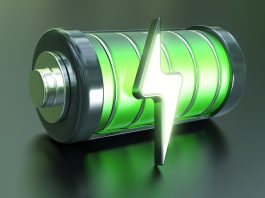A team of researchers have located a novel energy storage mechanism that may potentially achieve the elusive rechargeability of calcium-air batteries.
The collaborative effort between scientists from the University of Liverpool and the National Tsing Hua University has developed a unique energy storage mechanism that may possibly realise the rechargeability capacity of calcium-air batteries, a process that has proved to be incredibly challenging.
Their research is published in the journal Chemical Science.
The newly discovered energy storage mechanism is described by the researchers as a trapped interfacial redox – a neoteric component of energy storage that resides at the electrode interface – a breakthrough in energy that has a vast array of potential applications in everyday devices.
Yi Ting Lu, the lead author of the study and a joint PhD student in the dual PhD programme between the University of Liverpool and National Tsing Hua University, said: “We started investigating these electrolyte systems as part of understanding how to develop a metal-air battery based upon calcium metal, which is a highly earth-abundant element, creating a highly sustainable battery technology.
“The research explores the formation of an electrochemically generated interlayer coating on electrode surfaces that confines the reduced form of oxygen gas known as superoxide, allowing it to then be readily oxidised.”
The team conducted their investigation by utilising an electrolyte that was designed for a calcium-air battery – until now, scientists had believed this process to be essentially irreversible. However, by running the electrode through tens of cycles, the researchers distinguished that the electrochemical process became increasingly more reversible. The team carried out an extensive series of experiments to understand the mechanism in more detail.
Dr Alex Neale, a member of the research team, said: “Through systematic electrochemical and spectroscopy investigations, we began to understand the origins of this reasonably strange and exciting new process appearing in our measurements. The new mechanism of trapped interfacial redox we defined facilitates a previously unseen degree of reversibility for systems based on the calcium-air battery.”
The scientists will now be turning their attention to other forms of electrolyte systems to see if this process can be recreated; additionally, they will be aiming to scale up the process to design practical energy storage devices.









